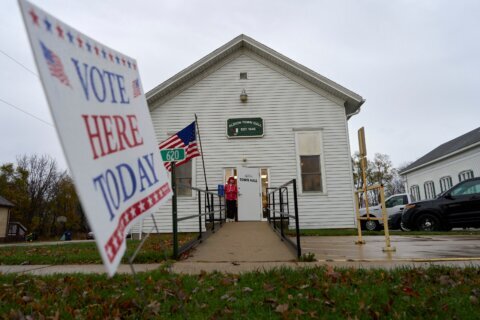The area of the Tidal Basin in D.C. that includes national memorials, monuments and iconic cherry trees sits on unstable ground that floods daily, and the infrastructure there is crumbling. But proposals for how to protect the area now are being considered.
“What takes shape is a legacy that will last for generations, a collective statement for the next century,” said Eduard Krakhmalnikov, who heads strategic programming and volunteer initiatives at the Trust for the National Mall.
Krakhmalnikov explored some of the proposals during a webinar hosted by The George Washington University Museum and The Textile Museum.
Five landscape architecture firms have submitted design plans for a re-imagined Tidal Basin, but Krakhmalnikov said the offerings under review are not a competition.
“Right now, we’re not considering any of the designs or proposals as any kind of final stage. They open us to a way to figure out different and creative solutions,” Krakhmalnikov said. “I want to stress that this is open to not just the design firms but everyone who goes on the website and submits your ideas — your thoughts.”
One question people are being asked to weigh in: Whether the iconic cherry trees that surround the Tidal Basin should be moved to higher ground, by creating new cherry tree groves and promenades.
Krakhmalnikov said only about 3% to 4% of the current trees are survivors of those planted in 1912 as a gift of friendship from the people of Japan.
Efforts to preserve the charm, beauty and experience of peak bloom may involve horticultural evolutions.
“As the climate changes peak bloom will be fragmented, the trees will peak at various times. So, are there new species that you then can introduce that keep that peak bloom we’re used to, or slightly different but all at once,” Krakhmalnikov surmised.
All the design proposals being reviewed imagine a Tidal Basin of permeable wetlands versus a hard-walled edge and with outdated infrastructure upgraded with new levees, jetties and overlooks.








